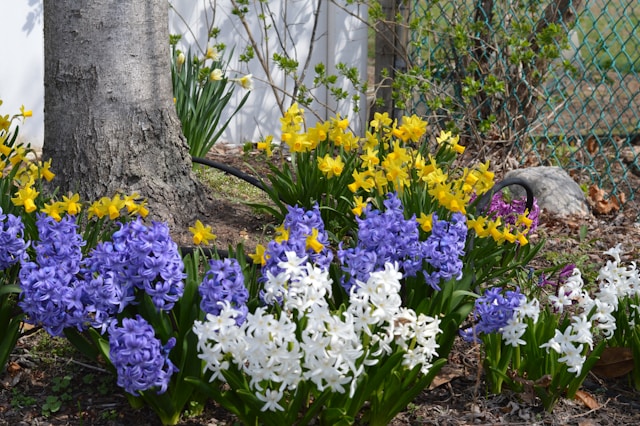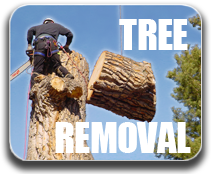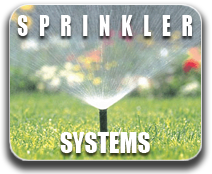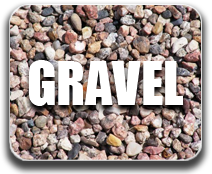How to Prepare Your Yard for Spring Growth
August 11, 2025As winter fades and the days start getting longer, your yard begins to wake up from its seasonal rest. Spring is the ideal time to set the stage for healthy plants, lush grass, and a vibrant outdoor space that will thrive all year long. With a little planning and preparation, you can give your yard the boost it needs to make the most of the growing season.

Assess the State of Your Yard
Before jumping into planting or fertilizing, take a walk around your property. Look for signs of winter damage, such as broken branches, compacted soil, or patches of dead grass. Check fences, edging, and hardscape areas for wear and tear.
Taking inventory now will help you prioritize tasks and address any problems before they become bigger issues. It’s also a great opportunity to visualize what you’d like your yard to look like by summer.
Clean Up Debris
Fallen leaves, branches, and other debris can block sunlight, trap moisture, and create a breeding ground for pests. Clearing these materials away allows your lawn and garden beds to breathe and absorb nutrients more effectively.
You can either rake by hand for a more controlled cleanup or use a leaf blower for larger areas. Don’t forget to clean out gutters and downspouts to ensure proper water drainage as spring rains arrive.
Prune and Trim
Spring pruning helps promote healthy growth and shapes your plants for the season ahead. Focus on removing dead, damaged, or diseased branches from trees and shrubs.
For flowering plants, timing is important. Some should be pruned before they bloom, while others should be trimmed after flowering to avoid cutting off buds. If you’re unsure about a specific plant, a landscaping professional like All Valley Landscaping can help determine the right approach.
Test and Improve Your Soil
Healthy soil is the foundation for a thriving yard. A simple soil test can reveal pH levels and nutrient deficiencies, allowing you to make informed decisions about fertilizing and amendments.
Depending on the results, you may need to add lime to raise pH, sulfur to lower it, or compost to enrich organic matter. Early spring is also a good time to aerate compacted soil, which improves water and nutrient absorption.
Fertilize Strategically
Not all areas of your yard need the same type or amount of fertilizer. Lawns, flower beds, and vegetable gardens have different nutritional requirements. Choose a fertilizer suited to each area, and apply it according to the manufacturer’s instructions.
Avoid over-fertilizing—too much can harm plants and contribute to nutrient runoff that impacts local waterways. A balanced approach will encourage steady, healthy growth.
Prepare Garden Beds
If you’re planning to grow vegetables, herbs, or flowers, now’s the time to get your garden beds ready. Remove weeds, turn the soil, and add compost or organic matter to boost fertility.
Raised beds warm up faster than ground-level plots, making them a good option for early planting. Be mindful of frost dates in your area; resources like The Old Farmer’s Almanac can help you determine the best time to start specific crops.
Plan Your Planting
Spring is full of possibilities, but a little planning goes a long way toward creating a cohesive, low-maintenance landscape. Consider factors like:
- Sunlight exposure
- Soil type and drainage
- Watering needs
- Bloom times and color combinations
Choosing native plants can reduce maintenance needs and improve resilience. They’re adapted to your local climate and often require less water and fertilizer than non-native species.
Refresh Mulch
Mulching garden beds and around trees helps retain soil moisture, regulate temperature, and suppress weeds. Over time, mulch breaks down and becomes less effective. Spring is the perfect time to replenish it, aiming for a layer about two to three inches thick.
Avoid piling mulch against plant stems or tree trunks, as this can trap moisture and cause decay.
Inspect and Maintain Irrigation Systems
A working irrigation system is essential for consistent watering during the growing season. Check for leaks, clogs, or damaged sprinkler heads, and make necessary repairs before regular watering begins.
If you don’t have an irrigation system, consider adding soaker hoses or drip irrigation to garden beds for efficient watering that minimizes evaporation.
Final Touches for a Great Start
Once the major preparation work is done, you can add finishing touches to enhance your outdoor space. This could include:
- Edging garden beds for a clean look
- Planting early-season flowers for instant color
- Setting up outdoor furniture or decor
- Installing lighting for evening ambiance
A well-prepared yard not only looks better but also makes maintenance easier throughout the rest of the year.
Final Thoughts
Spring preparation is an investment that pays off in months of healthy growth and outdoor enjoyment. By assessing your yard’s needs, cleaning up, improving the soil, and planning your planting strategy, you can set the stage for a thriving landscape.
Whether you prefer to handle the work yourself or call in professionals like All Valley Landscaping, taking action now ensures your yard will be ready to shine when warm weather arrives.








